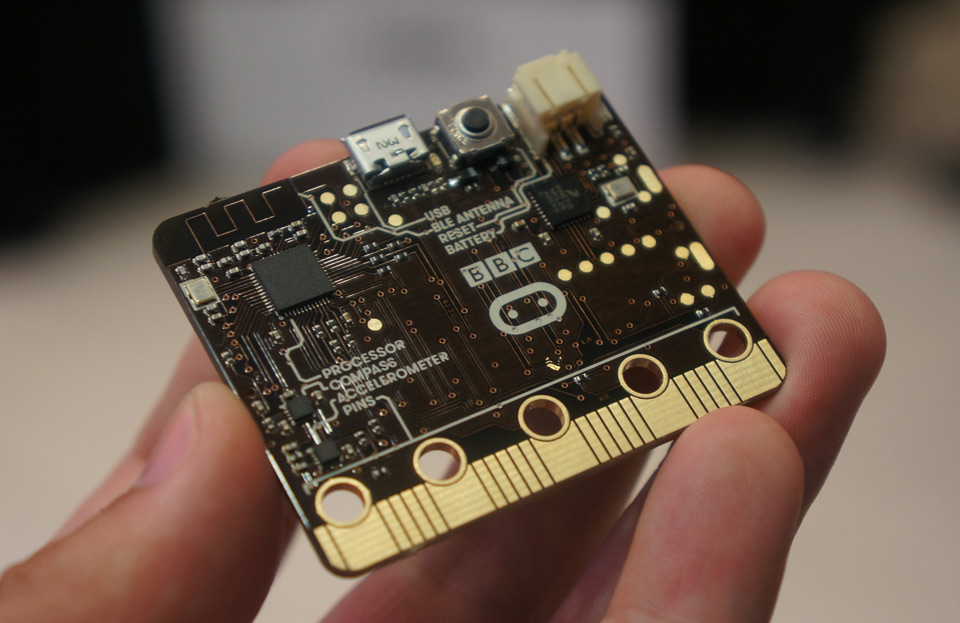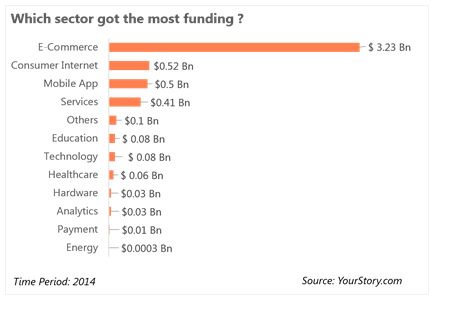Sections
- micro:bits and Code Club
- Nokia and Microsoft
- Devices and Manufacturers
- Apps and Services
- Google and Android
- Python
- Hardware and the Internet of Things
- Cloud and Security
- Artificial Intelligence and Robots
- Exponential Organisations (ExOs)
- Digital Enterprise
- UX and Design
- Product Management and Sales
- Greece
- Work and Culture
micro:bits and Code Club
[avatar user=”malm” size=”small” align=”left” link=”file” /]
I’ve just come to the of my second year of running a primary school Python Code Club as part of a national volunteer initiative in the UK aimed at 9-11 year old children. My observations on what the children and I learned from the experience are available in this separate dedicated blog post. Here’s a short video of the final version of a version of the Snake game we developed during the course of this year’s club:
By lucky coincidence, the Year 6 children who participated this year will each receive a micro:bit from the BBC when they move to Year 7 to further develop their nascent Python skills on. The final design unveiled this week by the BBC is a comfortably portable 4cm x 5cm board and news of the giveaway is a very welcome and exciting development indeed:
The broadcaster will be giving away 1 million devices to every year 7 student (11 and 12-year-olds) in the UK this October, with the idea being that they’ll form the core of their learning and projects. Being so small, students will be able to carry them between classes, compare modifications in the playground and collaborate on assignments.

Engadget compared micro:bit favourably with the famed original BBC Micro that inspired a generation in the 80’s:
It’s been a while since the original BBC Micro was considered cutting edge, but even so — this new device is roughly 18 times faster and 67 times lighter than its spiritual predecessor.
The UK national code club network fully supported the announcement and also signalled the profound impact it could have in equipping the next generation of UK schoolchildren with the digital skills they will need to compete with other countries:
Speaking at Tuesday’s event the BBC’s Director General, Tony Hall said: “Just as the BBC Micro introduced millions to personal computers 30 years ago, the BBC micro:bit can help equip a new generation with the digital skills they need to find jobs and help grow the UK economy.”

In a time when many in the UK seem keen to criticize the BBC, it is important to remember it is uniquely placed as a public service organisation to support this kind of nationwide initiative.
Nokia and Microsoft
- Microsoft announced that up to 7800 employees will be laid off over the coming months mainly due to a massive write-down and restructure of its phone division. This is on top of the 18000 it announced it would let go last year. Many analysts saw the news as an acknowledgement of the ultimate failure of the Nokia acquisition with the BBC’s Rory Cellan-Jones calling it “a disaster for all concerned“. Microsoft will apparently continue to make a reduced portfolio of Windows Phone devices and somehow maintain support for partner OEMs who are doing so as well:
[Microsoft] also said that “the future prospects for the Phone Hardware segment are below original expectations” due to the new plans.
- The company’s mobile focus however will shift to cross-platform app software as befits CEO Satya Nadella’s “cloud-first, mobile-first” strategy:
While Microsoft will not stop making smartphones, Mr. Nadella said on Wednesday that it would no longer focus on the growth of that business, instead emphasizing the expansion of the broad “ecosystem” of products, including mobile phones, that run its Windows software. Since he took over, Mr. Nadella has increased the development of apps and services for Google’s Android and Apple’s iOS devices, many of which have been popular with the public.
- Some in the Windows Phone enthusiast community tried to portray the move as a “necessary” development that will usher in a new era of “Enterprise-ready” devices and an Apple-like “less is more” approach to their product roadmap. However, the loss of so many handset development resources is bound to have a huge impact on Microsoft’s capability to deliver on any such vision. The move ends a four and a half year calamitous journey of decline and fall for the remainder of what is left of Nokia’s once world-leading mobile division – in all 25000 employees have lost their jobs in 15 months. The rot had already set in before Stephen Elop’s infamous 11.02.11 burning platform memo but began to gain momentum from that point. Presumably many of those being made redundant will have been been on the downward ride from there to here. No amount of gloss can reflect what amounts to a $7.6 billion write off in a Panglossian light either for the company or those soon to leave it:

- Nokia itself is struggling to divest itself of its HERE maps division amid signs that Uber have dropped out of the running leaving the German auto OEM consortium in a position of considerable leverage as the main customers of their mapping solution supplier:
German car makers are feeling less pressure to pay a high price to clinch Here, amid signs that rival bidders such as Uber, the Silicon Valley-based ride-hailing service, have dropped out of the race, one of the financial sources said.
Germany’s car makers are major clients of Here. That gives BMW, Daimler’s luxury brand Mercedes and VW’s premium brand Audi some leverage in the auction process, since other buyers would see Here’s value shrink if the car makers stopped using it or switched to a rival maps supplier, such as TomTom of the Netherlands.
Devices and Manufacturers
- The Turing Phone was highlighted in the blog a few weeks ago in the context of its use of an “unbreakable” material called “liquidmorphium”. Its the phone the Hulk would use if he had one. This week Mashable go hands on with the phone “made for liquid metal“:
“First there were feature phones, then smartphones and now cipher phones. … You’re probably wondering, what is a cipher phone? … stronger than titanium and steel [the] Turing Phone [represents] the next evolution of the mobile phone — phones with futuristic industrial design, and private and protected communication networks.”
- Smartphone battery life is regularly cited as their number one concern by users. Wireless charging is seen as a promising solution. TechCrunch provided a comprehensive review of the technology landscape and future potential:
Consumers want better batteries, not wearables.

- Samsung are going back to the future with a retro clamshell product reportedly running Android 5.1.1 powered by a Qualcomm 64-bit octocore 808 processor.
- In an interesting development that has broad ramifications for all OEMs shipping smartphone products into China, Samsung and Oppo have been taken to task for the quantity of bloatware in their devices:
A minor Chinese consumer protection group has filed lawsuits against Samsung and Oppo to contest the pair’s use of bloatware on their smartphones. The Shanghai Consumer Council believes that the two companies install far too many additional apps on their devices and then make it difficult for them to be easily removed. The group says that it was motivated to launch the legal broadside after a high number of complaints from users. It believes that people are aggrieved that they’ve got less storage space than expected, and that these apps slurp down excessive quantities of data.
Apps and Services
- The reality of mobile app development as seen from an indie perspective. There are so many outfits developing apps that your chances of success even with a good proposition are virtually zero.
What’s more likely is that you’ll find yourself working on a Mobile Experience for a Big National Brand(tm) and doing the apps you want to write in your spare time.
- Achieving success with an App Store proposition certainly involves a lot more than development. Digital marketing is an essential part of the picture and something that indie developers may struggle to manage on top of everything else:
To ensure that an app is successful, business developers should ensure that they focus on social media sales rather than app stores. … You should also be monitoring ‘branter’, i.e. banter about your brand, and react in a timely fashion by offering promotions, for example, when the volume is significant. For the top 20 apps this equates to about 40 million tweets, apparently.
- Morten Grauballe, CEO at knowledge-based games outfit Planeto offers his strategic insights into monetization options for games developers including premium upgrades, advertising, brand tie-in and generating revenue from user data. For Grauballe the future of game-playing lies in mixing “magic and algorithms”:
I believe the next generation of big mobile game innovators will find business models that integrated a magical gameplay loop in weird and wonderful ways with the world of algorithms.
- Bugsnag is three years old and has just 9 employees. They also just secured $7.2 million for their “full-stack error-monitoring package“ aimed at enterprise developers. Bugsnag is designed to surface the most important information about software crashes and has a Slack-style user friendly collaboration interface.
Bugsnag is operating in a world where software development has become critical to virtually every company on earth and, as a result, is creating two opportunities: one for people to write software and another for companies to help those software developers do their jobs better.

- Instagram now supports 1080×1080 image storage.
- This article from 2011 provides some interesting technical background into how Shazam works by creating a “spectrogram” of a song and then extracting metadata from it which can be compared against existing stored songs.
Google and Android
It’s designed to “detect and block the especially sneaky spam — the kind that could actually pass for wanted mail,” according to the company. The system also uses machine learning to track your usage patterns and figure out if you want certain kinds of mail, like newsletters or promos.
- Android Backup for M will backup user data. The support is built into the GMS layer so will not be available on vanilla AOSP-only products:
#GoogleDev100 ep 36/100: With the Android “M” release, Android Backup has evolved to include full data: https://t.co/vmCkpuaNQ4
— Google Developers (@googledevs) July 6, 2015
Python
- Python3 in one tree image:

Hardware and the Internet of Things
- Reality mirrors art in the form of a “official, screen-accurate, Bluetooth-enabled Star Trek Original Series Communicator” that will be available to buy from Jan 2016. According to the Verge the device is:
a faithful replica of the sci-fi show’s iconic Communicator device that works as both a Bluetooth handset for your phone and as a portable speaker. … As well as its Bluetooth functionality, the device is also filled with authentic Star Trek sounds and conversation fragments.

- Vortex is an educational Kickstarter appcessory aimed at introducing children to robotics in a “fun” way. A two-pack of interactive Vortex robots will cost around $131:
The Vortex robot pairs with iOS and Android smartphones or tablets over Bluetooth, and lets kids control its movement by tapping the screen in the Vortex app to initiate commands. It also comes four free, pre-programmed games – “bumping fight,” “virtual golf,” “driving,” and “robot soccer,” which can later be customized by the child to create their own play experience.
- Hackaday preview a high-speed CD launcher with a difference:
Cloud and Security
- Cloud Security machine learning consultancy Elastica published a grim case study exposing how weak security policy and practice and cloud make for a devastating combination. They don’t divulge how they managed to locate the document in question but once they have it, their forensic analysis of it is pretty brutal:
Recently, we detected a very sensitive document of a government postal service agency in India being exposed online on a Google Drive, a cloud storage service provided by Google. The document was unmasked by our in-house scanning engine named ElScan, which looks for potential issues in exposed documents in cloud storage platforms such as Google Drive, Dropbox, etc. … The exposed document seems to be related to an infrastructure migration in the organization. It contains cleartext information of accounts and email addresses with passwords of the various offices of the government postal service agency.
- No wonder Caspida, a cyber-security startup which was founded last year, launched its first product seven months ago and has only 35 employees has just been acquired by Splunk for $190 million. The purchase is intended to augment Splunk’s efforts to develop its Enterprise Security proposition which today accounts for a third of its revenue:
The company has a security product called Splunk App For Enterprise Security. With this purchase, Splunk is adding a new tool to its security arsenal to beef up the ability to locate threats using the machine learning techniques that Caspida has developed.
- Sobering advice on the reality of owning a data centre years down the line versus the temporary enthusiasm of setting it up in the first place:
What I’m trying to say is that owning a data center is a huge responsibility, and the bottom line is that few organizations are designed, measured or rewarded appropriately to also run the data center effectively. So think long and hard about why you really need an internal data center. If after thinking it through you still believe that owning is better than renting/leasing, then by all means build a data center. However, before you do, be sure to get corporate financial and organizational support lined up and guaranteed so that you can continue to own the facility effectively for 15 years after its completion.
- Ex-Google Director of Engineering Randy Shoup interviewed by InfoQ on microservices, Conway’s Law and evolutionary architectures:
So, maybe I am insufficiently imaginative, but microservices as a word is new, but the concept is old. It is SOA done properly. … I think that the next thing about microservices is that we will stop talking about microservices, but we will continue doing them.
- IEEE on why Bitcoin’s blockchain protocol has a great future ahead of it irrespective of what happens to Bitcoin the currency:
Artificial Intelligence and Robots
- MIT Technology Review examine man and machine “symbiosis” in action inside an Amazon fulfilment centre in New Jersey:
Amazon’s fulfillment center, located in the township of Robbinsville, is a dizzying hive of activity, with humans and machines working in carefully coordinated harmony. Besides showing the incredible efficiencies of Amazon’s operations, the factory hints at how, over the coming decades, technology may start to assist human workers with many simple manual tasks.

- Quora asks what are the best Siri replies? The ones to these questions are a fun starting point with zero divided by zero being top of the list for many:
- What is zero divided by zero?
- Suggest me some good phones
- Are you real?
- Tell me poem
- I’m feeling lonely
- I want to die
- I love you
- What does the fox say?
- Cortana, get me today’s movie times
- Tell me a joke
- What are you doing?
- What’s up?
- Tell me a story
- Do you have a boyfriend?
- Which political party do you support?
Exponential Organisations (ExOs)
- This great TechInAsia post surveying the startup scene in Asia explains why regional startups need a greater sense of urgency and self-preservation if they want to survive a merciless onslaught from well-funded tech giants. The diagram showing the tilt to Facebook and Google mobile advertising revenue in Vietnam is particularly revealing. In such hostile environment, the only way to survive is to aim exponential from the outset:
if you aren’t building big, your surest path is death. Now more than ever.

- Staying in Asia, TNW survey India, the “world’s fastest growing startup ecosystem“. In terms of funding, the market is heavily skewed to eCommerce – unsurprising given the huge consumer demand and commercial interest in eCommerce right across Asia:

- Tim O’Reilly on the new WTF Economy being “driven by algorithms, big data, robotics, and the on-demand economy“. His response is to set up an open event called Next:Economy in early November:
Over the past few decades, the digital revolution has transformed the world of media, upending centuries-old companies and business models. Now, it is restructuring every business, every job, and every sector of society. No company, no job is immune to disruption.
I believe that the biggest changes are still ahead, and that every industry and every organization will have to transform itself in the next few years, in multiple ways, or fade away. We need to ask ourselves whether the fundamental social safety nets of the developed world will survive the transition, and more importantly, what we will replace them with.

- TechCrunch plough the same ExO furrow in this piece in which they identify where the ability of small, agile outfits to out-compete much larger incumbents comes from. It lies in their ability to understand and assimilate external innovation far more rapidly and that ultimately is down to having the right talent in the organisation to do so:
“The cost of 3D printing has dropped by a factor of 400 in the past seven years. Industrial robots cost 1/23 of what they did just five years ago. Drones are 143-times cheaper than they were in 2010, and sequencing the human genome is 10,000-times less expensive than it was in 2009.
Making these types of breakthroughs may still require intense research, development and testing — but taking advantage of them does not. The abundance of ever-cheaper, more powerful technology allows small teams with the right approach to accomplish feats previously only achieved within the province of governments and major companies — and to do so faster and more effectively than their bigger competitors.”
Digital Enterprise
- Corporate IT spending has “left the boardroom” and is increasingly procured through “shadow IT” arrangements:
Developers are not just driving decisions about their immediate toolset, but exerting growing influence on strategic decisions about what services their business will use
- Those arrangements are typically led by staff with experience of software engineering. As IT becomes increasingly impacted by software-defined approaches and cloud technology, those skills are increasingly at a premium right across industry and a huge skills gap is opening up:
Almost half of IT leaders said a lack of the technical skills they wanted was the main reason why it was hard to find quality candidates. Another fifth said it was lack of soft skills. That makes seven out of 10 IT leaders attributing the problem to a skills shortage.
- Little wonder that McKinsey recommend that Enterprise organisations need to be more radical and merge their IT and developer operations functions into a single multi-functional “Digital Operations” team capable of addressing a development backlog across all business platforms employing a continuous delivery approach by breaking up functionality into separately deliverable elements (aka “microservices”). Or at least that’s my take on it:
two complementary lean capabilities are showing great promise: the integration of product development with IT operations (commonly referred to as DevOps), and a focus on continuous delivery.
- Organising for continuous delivery is one thing but leveraging advances in machine learning is a step beyond for most organisations today. But its application to business problems will become increasingly important to know about even for generalists. HBR on what every manager should know about machine learning. This is a good starting point:
The most common application of machine learning tools is to make predictions.
- It’s worth adding that if you can’t find a use case for prediction within your business you’re probably not looking hard enough. In terms of how that predictive capability is harnessed, the article briefly introduces at a high level:
- Feature extraction: the process of figuring out what variables and data the model will use
- Regularization: Separating signal from noise
- Cross-validation: Using sample data for model training
- And even if machine learning is being used at the edges, most organisations still don’t need a Chief Data Officer (CDO) because they’re simply not set up as a truly data-driven proposition:
The time to hire a CDO is after you’ve embarked on a journey to become a data-driven enterprise and have decided you need the right person in place to drive and execute your big-data strategy.
UX and Design
- This TNW article rounds up the current state of “Flat 2.0” or where non-skeuomorphic design goes next. It seems that a combination of subtle gradients, ghost buttons, bright colours, long shadows and simple type are distinctly emerging from the ultra-minimalism of Flat 1.0:
“today’s flat design is starting to include more touches of flair and ornamentation (and not just for the sake of aesthetics)”

- Adobe sponsored post outlining some of the “do’s and don’ts” of user focussed design none of which are entirely radical. Neither is the analogy with the physical world:
User experience online is very similar to the user experience you get when going to a grocery store. You want a pleasant time without any hassle. You want to be able to navigate the store quickly, get what you need right away, head to the checkout line without a wait, and get back home.
- Even so, Adobe’s Flash is increasingly unlikely to be part of the solution for any new propositions. TNW respondent Owen Williams suggests it’s time for Flash to die on security grounds:
It’s time to kill Adobe Flash and stop looking back. We’ll all be safer for it.
- So does Alex Stamos, Facebook Chief Security Officer:
https://twitter.com/alexstamos/status/620306643360706561
Product Management and Sales
- This FirstRound post offers some very good insights into how product management works at Pandora where they have around 25 PMs in 1600 staff. The Pandora process revolves around four key artefacts the last of which is often missing in other organisations:
- Executive summary – a one-page summary (see image below)
- Wiki – includes engineering status and operational milestones
- PRD – standards, product specifications, user case studies
- Launch plan document – coordinating PM, marketing, sales, development activities

- Another good FirstRound post on why it’s critical to have an absolutely rigorous and total onboarding experience for new sales staff in your business covering every aspect of its operation to ensure maximum efficiency and alignment for maximum impact. The way to do this is a “sales boot camp” according to the author:
The most effective onboarding is styled as a boot camp that expedites acclimation to company culture; immerses reps in the product, the business, and the market; gives them a crash course in tools and process; drills them on the skills and lexicon they’ll need to use all the time; and aligns them around the same vision for the future.
- Brands that infest your Twitter and Facebook feeds with sponsored “aren’t your friends, they’re the idiots at the social media party“. A mature and sophisticated presence on social media may be considered an essential component of a sales strategy these days but it’s questionable who’s buying the sort of fluff many big brands are churning out:
Repeat it slowly: “Brands are not my friends.” Brands are psychopathic constructs, infesting your social media timelines with carefully-constructed babble, a hollow echo of a real human voice.
Choose to be brave when taking that big next step! #choosehappiness pic.twitter.com/GcM8cFJFnc
— Coca-Cola (@CocaCola) July 2, 2015
Greece
- The exhortation to “be brave when taking that big next step!” seemingly doesn’t apply to all involved in the unfolding drama of Grexit. Though the EU stopped just short of the precipice on Sunday the omens remain very bad for the Greeks and many including Bloomberg think the Greeks should just quit anyway. They also gave PM Alexis Tspiras short shrift for having “gambled with his country’s fortunes, betting that the rest of the euro area would be so fearful of creating a precedent for an exit that they would capitulate to his demands and write him a blank check.“

- Thomas Piketty waded into the fray with a savage analysis of the German position suggesting that since they had “never repaid” either their WWI or WWII debts, they were not in a position to lecture others on their moral duties.
- Meantime this searing image of the consequences of debt on one elderly Greek man unable to withdraw any money went viral representing a reality that cannot be laundered by any brand wash:

- Often the tragedy of an individual resonates more powerfully with us than the statistic of a whole nation in turmoil. Psychologist Paul Slovic has identified the phenomenon as the “Collapse of Compassion”. It is another example of our collective failure to grasp the meaning of concepts like exponential growth:
Many people do not understand large numbers. Indeed, large numbers have been found to lack meaning and to be underweighted in decisions unless they convey affect (feeling). As a result, there is a paradox that rational models of decision making fail to represent. On the one hand, we respond strongly to aid a single individual in need. On the other hand, we often fail to prevent mass tragedies such as genocide or take appropriate measures to reduce potential losses from natural disasters. This might seem irrational but I think this occurs, in part, because as numbers get larger and larger, we become insensitive; numbers fail to trigger the emotion or feeling necessary to motivate action.
Work and Culture
- Old school management kills work culture when exercised on Millennials who “seek leadership and cultures that capture, cultivate and provide public recognition of good ideas — not just management ideas”. The scope for culture clash is considerable given many CEOs and middle management are Baby Boomers and Gen-Xers who have different instincts:

- Lateness is another example of a subject that divides Millennials and older types. Waitbutwhy.com’s Tim Urban published an entertaining deep dive into the psychology of lateness suggesting there are two sorts, okay lateness and not ok lateness and that the habitually late form two distinct groups:
Group 1) Those who don’t feel bad or wrong about it. These people are assholes.
Group 2) Those who feel terrible and self-loathing about it. These people have problems.
- Urban calls Group 2ers CLIPs (Chronically Late Insane Person) and his penetrating analysis of why the term is appropriate makes for uncomfortable reading for fellow CLIPs such as myself:
While both groups of not okay late people end up regularly frustrating others, a reliable way to identify a Group 2 CLIP is a bizarre compulsion to defeat themselves—some deep inner drive to inexplicably miss the beginning of movies, endure psychotic stress running to catch the train, crush their own reputation at work, etc. etc. As much as they may hurt others, they usually hurt themselves even more.
- Lateness notwithstanding, this epic long shaggy dog trail of responses on the Quora question “What are some psychological facts that people don’t know” takes in a huge range of experiments, heuristics and biases. A couple of highlights include Dilbert on the Contrast Effect and the Salesforce colour emotion guide:
